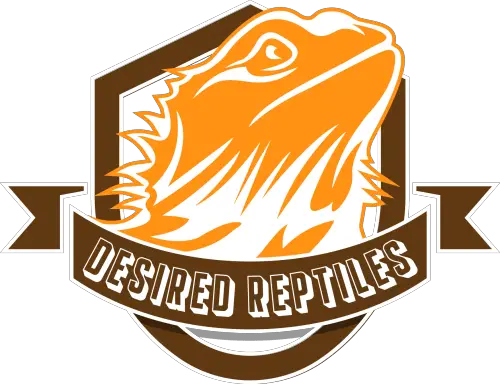The rate at which an animal poops depends on a variety of factors such as diet, hydration, or sometimes its environment. For bearded dragons, observing their bowels is a good way to determine if they’re healthy and safe. Beardies are often asymptomatic to underlying illnesses or changes, so a difference in their stool can be a potential tell-tale sign of a health problem. Once you uncover an unfamiliar sequence, the next thing to figure out is the reason for your discovery.
Healthy bearded dragons poop as much as their age requires them to. Adult bearded dragons can excrete once to twice weekly, while younger bearded dragons go twice daily to every other day.
If you’re a beginner, it can be a little tricky to figure out your pet’s pooping patterns. This is because dragons may not poop easily in new environments due to nervousness. However, it’s not a problem that a detailed article can’t help you through. Let’s get right into it!
5 Factors That Disrupt A Bearded Dragon’s Pooping Routine
The reason why your bearded dragon hasn’t pooped could be mild or serious. Usually, when the case is critical, it’s accompanied by symptoms indicating an illness such as weakness, droopiness, and sad-looking skin. Here are 5 common reasons why your beardie hasn’t relieved itself in a minute:
1. Brumation
Brumation is the hibernation period for bearded dragons and is usually accompanied by a reduced appetite due to a decrease in their metabolism. During this period, they poop less than usual since they are consuming less food.
2. A Difference In Temperature
If there’s any change in the temperature of your bearded dragon’s enclosure, it will affect its appetite and digestion. UVB rays from terrarium heat lamps provide a certain amount of Vitamin D that your beardie requires to metabolize food, and a lack thereof can cause constipation. Usually, the lamps deteriorate after 6 months of use. Check how long the lamp has been in use to note if its deterioration could be leading to your pet’s constipation and inability to poop.
3. Environmental Stress
If you have recently adopted your bearded dragon or changed its environment, it could stress and obstruct its regular poop routine. Although, you should know that not every dragon reacts to stress in the same way. Some may refuse to eat or run around, and others may just be uncomfortable pooping until they’re accustomed to their surroundings. Either way, with time your pet should loosen up and relieve itself freely in its environment.
4. The Bearded Dragon’s Age
The older beardies get, the less they poop. This is normal for all bearded dragons since the rate at which they consume food will also decline. If you notice a significant decrease in excretion relative to your bearded dragon’s growth, worry not. It’s completely normal for adults to poop less.
5. The Diet
A healthy bearded dragon diet consists of veggies, protein, and very little water. If any of these items are in excess or demand, it will affect the consistency of your dragon’s excretion. Too little water or veggies will lead to constipation, and too little protein in comparison to veggies and water will cause diarrhea.
Perhaps you have been feeding your pet way too many of those mealworms and neglecting its greens. It’s easy to get carried away with hand-feeding your dragon feeder worms, especially when you’re getting accustomed to it.

How Frequently Do Healthy Beardies Poop?
To fully answer this question, we must consider their ages and how much food they consume. As we all know, larger food portions equal more poop.
Hatchlings
Baby bearded dragons eat up to 3 times a day with a diet of 70% protein and 30% greens. Naturally, they’d need to poop and pass urate 7 to 12 times a week.
Juveniles
Juvenile beardies are not far from the hatchlings. They may consume less food, but they still eat a hefty amount and poop as often as babies do. So, you’d get 7 to 12 times a week, too.
Pre-adults
Pre-adults eat less than hatchlings and juveniles. They typically feed twice a day on a diet of 60% protein and 40% greens. This would reduce the poop frequency to 5 – 7 times a week.
Adults
Adult beardies eat just once a day and may decline food at intervals of one day. They also eat a lot of greens, as their food ratio is 70% greens to 30% protein. In a healthy week, adult and elderly bearded dragons can poop 1 to 2 times.
| Stages | Pooping Frequency/Week |
|---|---|
| Hatchling | 7 to 12 |
| Juveniles | 7 to 12 |
| Pre-adults | 5 to 7 |
| Adults | 1 to 2 |
Note: Just like humans, bearded dragons poop at different intervals depending on the individual beardie. In the same way they can prefer certain greens over others, they can choose to poop more frequently than another beardie– and that’s okay. However, there’s a duration that may become sinister especially if it’s abnormal and causes your dragon discomfort. I’ll explain that in a jiffy.

How Long Can Bearded Dragons Go Without Pooping?
The longest a bearded dragon can go without pooping is 6 months if they are brumating. Without brumation in the picture, adult beardies can go a whole week without pooping and still be fine, though this duration isn’t normal or safe.
If it has exceeded a week since your beardie has pooped, make a bee dive to the vet immediately to figure out the problem. This isn’t normal behavior and could be putting your pet in danger!
If you consider the age of your dragon and its diet, you will be accustomed to the bowel pattern with time. Your beardie could be constipated due to a bad diet or dehydration. While going to the vet is the overall best measure to take, there are certain first-aid techniques to help your beardie take out the trash.
2 Ways To Get Your Constipated Bearded Dragon To Finally Poop
If your pet is constipated, you may notice unusual bloating around the stomach area, almost as if the belly hangs much lower and spreads wider when pressed to the floor. If this happens, here are the two safest methods to induce bowel movement for your beardie:
Soaking Your Bearded Dragon In Water
For this method, all you need is a container of clean shallow water and a rock. You can even use the bathtub for extra space. Gently put your bearded dragon in the water and prop them on the rock so that the entire lower half is properly submerged.
This process will stimulate bowel movement and cause the dragon to poop. For an extra push, you can gently and carefully massage the belly with your fingertips motioning toward the direction of their tails- almost like you’re trying to nudge the feces out.
Feeding Them Watery Vegetables
Constipation simply means your bearded dragon could be dehydrated and one sure way of loosening their bowels is by providing high-water-content veggies into their diet to stimulate excretion. Feed them these veggies for two days and wait to see what happens. If they poop, you can immediately switch to healthy veggie options. Otherwise, you must rush to the vet for a professional inspection. Examples of watery vegetables are lettuce, cucumber, and zucchini.
What Does A Normal/Safe Bearded Dragon Poop Look Like?
A normal beardie poop should be of solid consistency. If it comes out in one string, that’s a win. It should look dark green or brown, with a white tip which is the urate. A healthy urate will also be firm; not hard, but firm. Sometimes, there’d be a clear puddle surrounding the poop and that’s similarly fine.
In addition, the poo will resemble the vegetables your dragon is being fed; if their diet consists of squash, it would look a little more orange than usual. If their diet includes purple cabbage, it would look violet or purple. The problem arises when the color change of the poop does not match the diet, then you should certainly get the feces sampled at the vet clinic.
While no feces smell of chocolates or flowers, a healthy bearded dragon poo shouldn’t smell like death or decay. If it stinks up the whole room like a bomb every time, perhaps it’s something worth looking into by a professional vet lab.
What Does An Abnormal/Unsafe Bearded Dragon Poop Look Like?
An abnormal beardie poop will have a watery, chalky, rock-hard, or sandy consistency. It may have undigested food in it, indicating that their diet is a little too harsh to digest. This usually occurs when you feed baby or juvenile dragons mealworms or superworms with tougher skins than they can digest.
You may also notice a weird coloring; reddish-brown or black poo is not a healthy sign especially when the urate is tainted. A healthy urate should be all-white and clear. An abnormal beardie poop may correspondingly have blood stains or mucus in it, which is a big, terrible red flag! If you notice this, immediately rush your pet to the vet.
The smell is unmistakable! As I mentioned earlier, beardie poop shouldn’t smell like roses, but when the smell fills the room and lingers like a bomb, then there’s certainly something awry with your pet.
Wrapping It Up
Bearded dragons poop quite frequently under normal circumstances. In cases where there’s a drastic change, it’s possible your dragon is preparing for brumation or is ill.
With this article, you should be able to discover your dragon’s pooping pattern and determine if there are any issues. If you are still uncertain or wary of carrying out the above-listed procedures on your own, you should visit a veterinarian to properly treat your pet and get it back on track.
